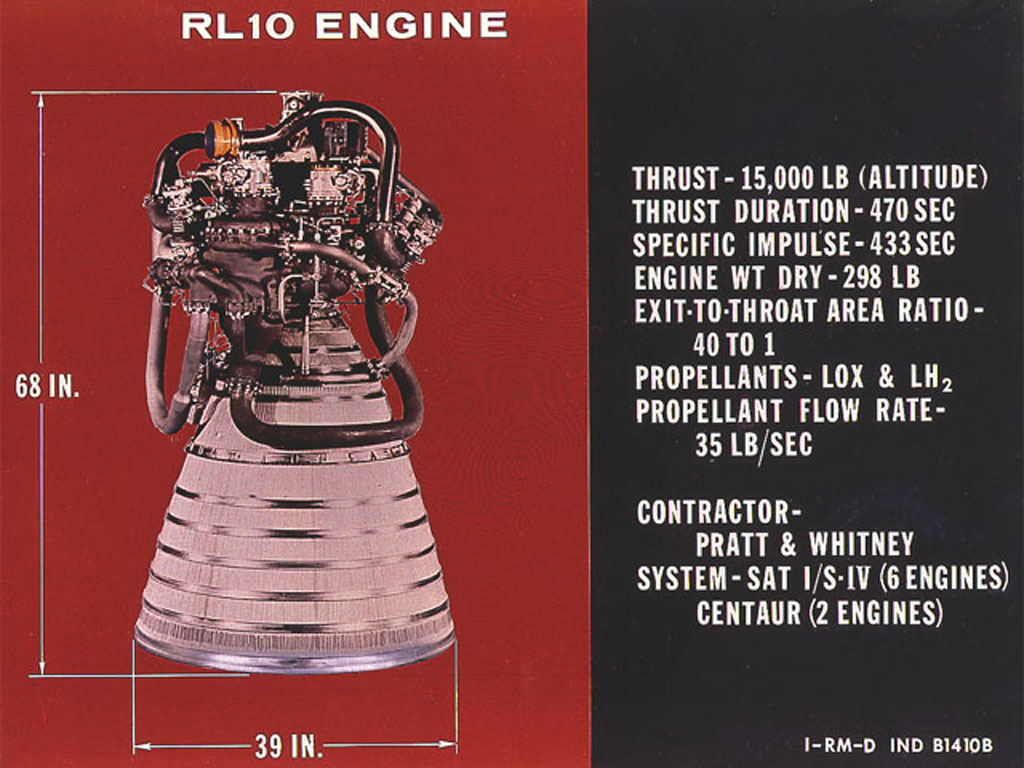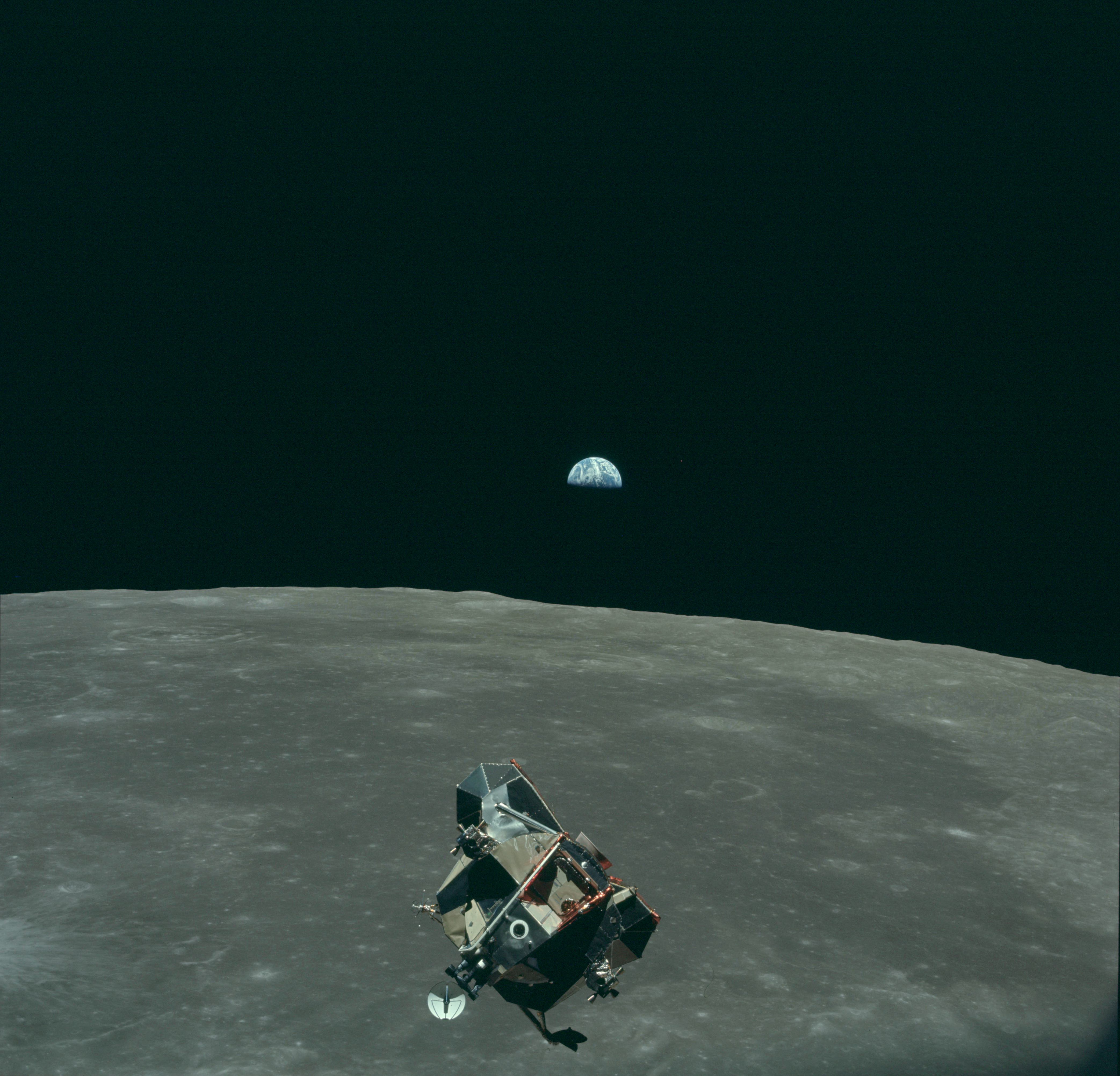|
BE-7
The Blue Engine 7 is a liquid hydrogen/oxygen dual expander cycle engine for use with the Blue Moon family of lunar landers. The company utilizes additive manufacturing in the development process and it is meant to generate of thrust, serving as both the ascent and descent engines for Blue Moon. History Following the commencement of the Artemis Program the company sought to independently develop a lunar lander, the 'MK1' and accompanying engine. The BE-7 test phase began in 2019 with additional hot fire testing in 2020 at the Marshall Space Flight Center. Following selection for NASA's second Human Landing System, which Blue Origin calls 'MK2', the company announced that the BE-7 engine will be used for both landers. A demonstration flight of the MK1, planned for 2025 is on track and will debut the BE-7 engine. In 2024, the company announced vacuum cell testing was being conducted on the engine at the Edwards Air Force Base. Technical specifications The BE-7 utilizes liquid ... [...More Info...] [...Related Items...] OR: [Wikipedia] [Google] [Baidu] |
Blue Origin
Blue Origin, LLC is an American privately funded aerospace manufacturer and sub-orbital spaceflight services company headquartered in Kent, Washington. Founded in 2000 by Jeff Bezos, the founder and executive chairman of Amazon, the company is led by CEO Bob Smith and aims to make access to space cheaper and more reliable through reusable launch vehicles. Rob Meyerson led Blue Origin from 2003 to 2017 and served as its first president. Blue Origin is employing an incremental approach from suborbital to orbital flight, with each developmental step building on its prior work. The company's name refers to the blue planet, Earth, as the point of origin. Blue Origin develops orbital technology, rocket-powered vertical takeoff and vertical landing (VTVL) vehicles for access to suborbital and orbital space. Initially focused on suborbital spaceflight, the company has designed, built and flown multiple testbeds of its New Shepard vehicle at its facilities in Culberson County, Texas. ... [...More Info...] [...Related Items...] OR: [Wikipedia] [Google] [Baidu] |
Blue Moon (spacecraft)
''Blue Moon'' is a robotic space cargo carrier and lunar lander, lander design concept for making space transport, cargo deliveries to the Moon. Designed by Blue Origin, and planned to be operated by Blue Origin, on a mission aimed for 2024. ''Blue Moon'' benefits from the VTVL, vertical landing technology heritage used in Blue Origin's Blue Origin New Shepard, New Shepard sub-orbital rocket. The lander is planned to be capable of delivering to the surface of the Moon. The cargo vehicle could also be used to support NASA activities in cis-lunar space, or transport payloads of ice from Shackleton Crater to support space activities. Blue Origin began development work on the lander in 2016, publicly disclosed the project in 2017, and unveiled a mock up of the ''Blue Moon'' lander in May 2019. The first projected mission for the craft was to have been a 2024 lunar south pole region landing, where it was proposed that a series of landings could be used to deliver the infrastructu ... [...More Info...] [...Related Items...] OR: [Wikipedia] [Google] [Baidu] |
Expander Cycle
The expander cycle is a power cycle of a bipropellant rocket engine. In this cycle, the fuel is used to cool the engine's combustion chamber, picking up heat and changing phase. The now heated and gaseous fuel then powers the turbine that drives the engine's fuel and oxidizer pumps before being injected into the combustion chamber and burned. Because of the necessary phase change, the expander cycle is thrust limited by the square–cube law. When a bell-shaped nozzle is scaled, the nozzle surface area with which to heat the fuel increases as the square of the radius, but the volume of fuel to be heated increases as the cube of the radius. Thus beyond approximately 300 kN (70,000 lbf) of thrust, there is no longer enough nozzle area to heat enough fuel to drive the turbines and hence the fuel pumps. Higher thrust levels can be achieved using a bypass expander cycle where a portion of the fuel bypasses the turbine and or thrust chamber cooling passages and goes directly to the ... [...More Info...] [...Related Items...] OR: [Wikipedia] [Google] [Baidu] |
Cislunar Transporter
Lockheed Martin is to design and operate a reusable space tug called the Cislunar Transporter as part of the Blue Moon architecture. The Cislunar Transporter consists of two parts, a tug, with 3 BE-7 engines, and a tanker, which are each to be launched on a New Glenn New Glenn is a heavy-lift orbital launch vehicle in development by Blue Origin. Named after NASA astronaut John Glenn, design work on the vehicle began in 2012. Illustrations of the vehicle, and the high-level specifications, were initially ... carrier rocket before docking together to form a single vehicle. After these components are assembled, the vehicle is then to be fueled by New Glenn upper stages transferring liquid oxygen and liquid hydrogen propellants. The transporter will then travel to near-rectilinear halo orbit, where it is to dock to and fuel the Blue Moon lander. Lockheed Martin has suggested that the Cislunar Transporter could also be used to service other customers. The same zero-boil-off syst ... [...More Info...] [...Related Items...] OR: [Wikipedia] [Google] [Baidu] |
Rocket Engines Using Methane Propellant
A rocket (from it, rocchetto, , bobbin/spool) is a vehicle that uses jet propulsion to Acceleration, accelerate without using the surrounding Atmosphere of Earth, air. A rocket engine produces thrust by Reaction (physics), reaction to exhaust expelled at high speed. Rocket engines work entirely from rocket propellant, propellant carried within the vehicle; therefore a rocket can fly in the vacuum of space. Rockets work more efficiently in a vacuum and incur a loss of thrust due to the opposing pressure of the atmosphere. Multistage rockets are capable of attaining escape velocity from Earth and therefore can achieve unlimited maximum altitude. Compared with Airbreathing jet engine, airbreathing engines, rockets are lightweight and powerful and capable of generating large accelerations. To control their flight, rockets rely on momentum, airfoils, Reaction control system, auxiliary reaction engines, gimballed thrust, Reaction wheel, momentum wheels, Thrust vectoring, deflection o ... [...More Info...] [...Related Items...] OR: [Wikipedia] [Google] [Baidu] |
Blue Origin Rocket Engines
Blue is one of the three primary colours in the RYB colour model (traditional colour theory), as well as in the RGB (additive) colour model. It lies between violet and cyan on the spectrum of visible light. The eye perceives blue when observing light with a dominant wavelength between approximately 450 and 495 nanometres. Most blues contain a slight mixture of other colours; azure contains some green, while ultramarine contains some violet. The clear daytime sky and the deep sea appear blue because of an optical effect known as Rayleigh scattering. An optical effect called Tyndall effect explains blue eyes. Distant objects appear more blue because of another optical effect called aerial perspective. Blue has been an important colour in art and decoration since ancient times. The semi-precious stone lapis lazuli was used in ancient Egypt for jewellery and ornament and later, in the Renaissance, to make the pigment ultramarine, the most expensive of all pigments. In the ei ... [...More Info...] [...Related Items...] OR: [Wikipedia] [Google] [Baidu] |
RL10
The RL10 is a liquid-fuel cryogenic rocket engine built in the United States by Aerojet Rocketdyne that burns cryogenic liquid hydrogen and liquid oxygen propellants. Modern versions produce up to of thrust per engine in vacuum. Three RL10 versions are in production for the Centaur upper stage of the Atlas V and the DCSS of the Delta IV. Three more versions are in development for the Exploration Upper Stage of the Space Launch System and the Centaur V of the Vulcan rocket. The expander cycle that the engine uses drives the turbopump with waste heat absorbed by the engine combustion chamber, throat, and nozzle. This, combined with the hydrogen fuel, leads to very high specific impulses (''I''sp) in the range of in a vacuum. Mass ranges from depending on the version of the engine. History The RL10 was the first liquid hydrogen rocket engine to be built in the United States, with development of the engine by Marshall Space Flight Center and Pratt & Whitney beginning in the ... [...More Info...] [...Related Items...] OR: [Wikipedia] [Google] [Baidu] |
Lunar Module Ascent Engine
The ascent propulsion system (APS) or lunar module ascent engine (LMAE) is a fixed-thrust hypergolic rocket engine developed by Bell Aerosystems for use in the Apollo Lunar Module ascent stage. It used Aerozine 50 fuel, and oxidizer. Rocketdyne provided the injector system, at the request of NASA, when Bell could not solve combustion instability problems. Origins The LMAE traces its origin to the earlier Bell Aerosystems engines (8096, 8247) used in the RM-81 Agena, the rocket upper stage and satellite support bus developed by Lockheed initially for the canceled WS-117L reconnaissance satellite program. The Agena served as an upper stage for several defense, intelligence, and exploration programs: SAMOS-E, SAMOS-F (ELINT Ferret) and MIDAS (Missile Defense Alarm System) military early-warning satellites, Corona photo intelligence program, and the Ranger and Lunar Orbiter lunar probes. The Lockheed Agena target vehicle using the Bell 8247 engine was qualified for 15 restarts ... [...More Info...] [...Related Items...] OR: [Wikipedia] [Google] [Baidu] |
Apollo Lunar Module
The Apollo Lunar Module (LM ), originally designated the Lunar Excursion Module (LEM), was the lunar lander spacecraft that was flown between lunar orbit and the Moon's surface during the United States' Apollo program. It was the first crewed spacecraft to operate exclusively in the airless vacuum of space, and remains the only crewed vehicle to land anywhere beyond Earth. Structurally and aerodynamically incapable of flight through Earth's atmosphere, the two-stage lunar module was ferried to lunar orbit attached to the Apollo command and service module (CSM), about twice its mass. Its crew of two flew the complete lunar module from lunar orbit to the Moon's surface. During takeoff, the spent descent stage was used as a launch pad for the ascent stage which then flew back to the command module, after which it was also discarded. Overseen by Grumman, the LM's development was plagued with problems that delayed its first uncrewed flight by about ten months and its first crewed ... [...More Info...] [...Related Items...] OR: [Wikipedia] [Google] [Baidu] |
Lunar Module Descent Engine
The descent propulsion system (DPS - pronounced 'dips') or lunar module descent engine (LMDE), internal designation VTR-10, is a variable-throttle hypergolic rocket engine invented by Gerard W. Elverum Jr. and developed by Space Technology Laboratories (TRW) for use in the Apollo Lunar Module descent stage. It used Aerozine 50 fuel and dinitrogen tetroxide () oxidizer. This engine used a pintle injector, which paved the way for other engines to use similar designs. Requirements The propulsion system for the descent stage of the lunar module was designed to transfer the vehicle, containing two crewmen, from a circular lunar parking orbit to an elliptical descent orbit with a pericynthion of , then provide a powered descent to the lunar surface, with hover time above the lunar surface to select the exact landing site. To accomplish these maneuvers, a propulsion system was developed that used hypergolic propellants and a gimballed pressure-fed ablative cooled engine that was cap ... [...More Info...] [...Related Items...] OR: [Wikipedia] [Google] [Baidu] |
In Situ Resource Utilization
In space exploration, in situ resource utilization (ISRU) is the practice of collection, processing, storing and use of materials found or manufactured on other astronomical objects (the Moon, Mars, asteroids, etc.) that replace materials that would otherwise be brought from Earth. ISRU could provide materials for life support, propellants, construction materials, and energy to a spacecraft payloads or space exploration crews. It is now very common for spacecraft and robotic planetary surface mission to harness the solar radiation found ''in situ'' in the form of solar panels. The use of ISRU for material production has not yet been implemented in a space mission, though several field tests in the late 2000s demonstrated various lunar ISRU techniques in a relevant environment. ISRU has long been considered as a possible avenue for reducing the mass and cost of space exploration architectures, in that it may be a way to drastically reduce the amount of payload that must be laun ... [...More Info...] [...Related Items...] OR: [Wikipedia] [Google] [Baidu] |
Lockheed Martin
The Lockheed Martin Corporation is an American aerospace, arms, defense, information security, and technology corporation with worldwide interests. It was formed by the merger of Lockheed Corporation with Martin Marietta in March 1995. It is headquartered in North Bethesda, Maryland, in the Washington, D.C. area. Lockheed Martin employs approximately 115,000 employees worldwide, including about 60,000 engineers and scientists as of January 2022. Lockheed Martin is one of the largest companies in the aerospace, military support, security, and technologies industry. It is the world's largest defense contractor by revenue for fiscal year 2014.POC Top 20 Defence Contractors of 2014 . Retrieved: July 2015 In 2013, 78% of Lockheed Martin's revenues came from military sales; [...More Info...] [...Related Items...] OR: [Wikipedia] [Google] [Baidu] |







